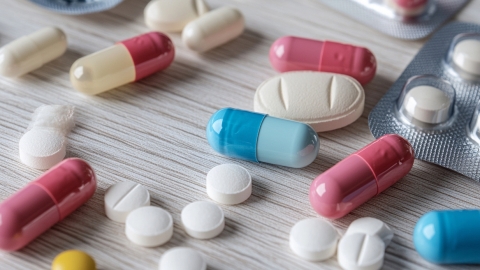What should I do if my gallbladder hurts even after taking medication for cholecystitis?
In general, persistent pain in cholecystitis despite medication may be caused by uncontrolled diet, excessive emotional fluctuations, insufficient drug dosage, gallstone obstruction, or gallbladder gangrene. Patients can improve their condition through appropriate interventions such as lifestyle modifications, pharmacological treatment, or surgical therapy based on the specific cause. Detailed analysis is as follows:

1. Uncontrolled Diet
Consuming spicy or greasy foods during medication can stimulate gallbladder contraction and exacerbate inflammatory responses, leading to ongoing pain. It is essential to immediately adjust the diet by choosing light, easily digestible foods such as millet porridge and noodles. Avoid fatty meats, chili peppers, and fried foods. Eating small, frequent meals helps reduce the burden on the gallbladder.
2. Excessive Emotional Fluctuations
Stress and anxiety can disrupt nervous system regulation, triggering gallbladder spasms and worsening pain. Relaxation techniques such as listening to soothing music or practicing deep breathing can help stabilize emotions. Avoid intense emotional swings, ensure adequate rest, and minimize adverse effects of emotional stress on the gallbladder.
3. Insufficient Medication Dosage
If the dose of anti-inflammatory or analgesic medications is inadequate for effective treatment, inflammation and pain may not be properly controlled. Patients should seek medical advice promptly. Under a doctor’s guidance, the dosage may be adjusted, or alternative medications such as Cefoperazone Sodium and Sulbactam Sodium for injection, Piperacillin Sodium and Tazobactam Sodium for injection, or Racemic Hyoscine Hydrobromide Injection may be prescribed to enhance therapeutic efficacy.
4. Gallstone Obstruction
Gallstones blocking the cystic duct can prevent bile drainage, increasing pressure within the gallbladder and causing persistent pain. Under medical supervision, medications such as Ursodeoxycholic Acid Capsules, Biliary Stone Eliminating Tablets, or Rhubarb Cholagogue Capsules may be used. If drug therapy proves ineffective, laparoscopic cholecystectomy may be required to relieve the obstruction.
5. Gallbladder Gangrene
If cholecystitis is not promptly controlled, ischemia and necrosis of the gallbladder wall may occur, resulting in severe and continuous pain. Immediate medical attention is necessary, typically requiring cholecystectomy. Postoperatively, follow medical instructions to use antibiotics such as Ceftriaxone Sodium for injection, Metronidazole for injection, or Levofloxacin for injection to prevent infection. Regular wound dressing changes are needed to keep the surgical site dry.
Routine management includes strict dietary control with an emphasis on light, low-fat meals; learning to regulate emotions and maintain psychological balance; taking medications in correct doses and at regular intervals as prescribed without self-adjusting dosage; undergoing periodic gallbladder ultrasound examinations to monitor disease progression; and seeking immediate medical care if symptoms such as worsening pain, fever, or jaundice develop.




